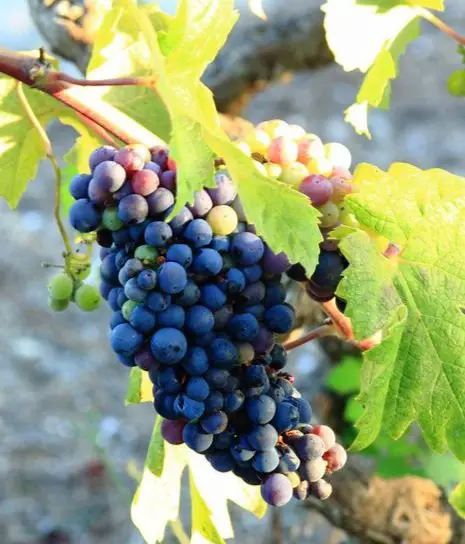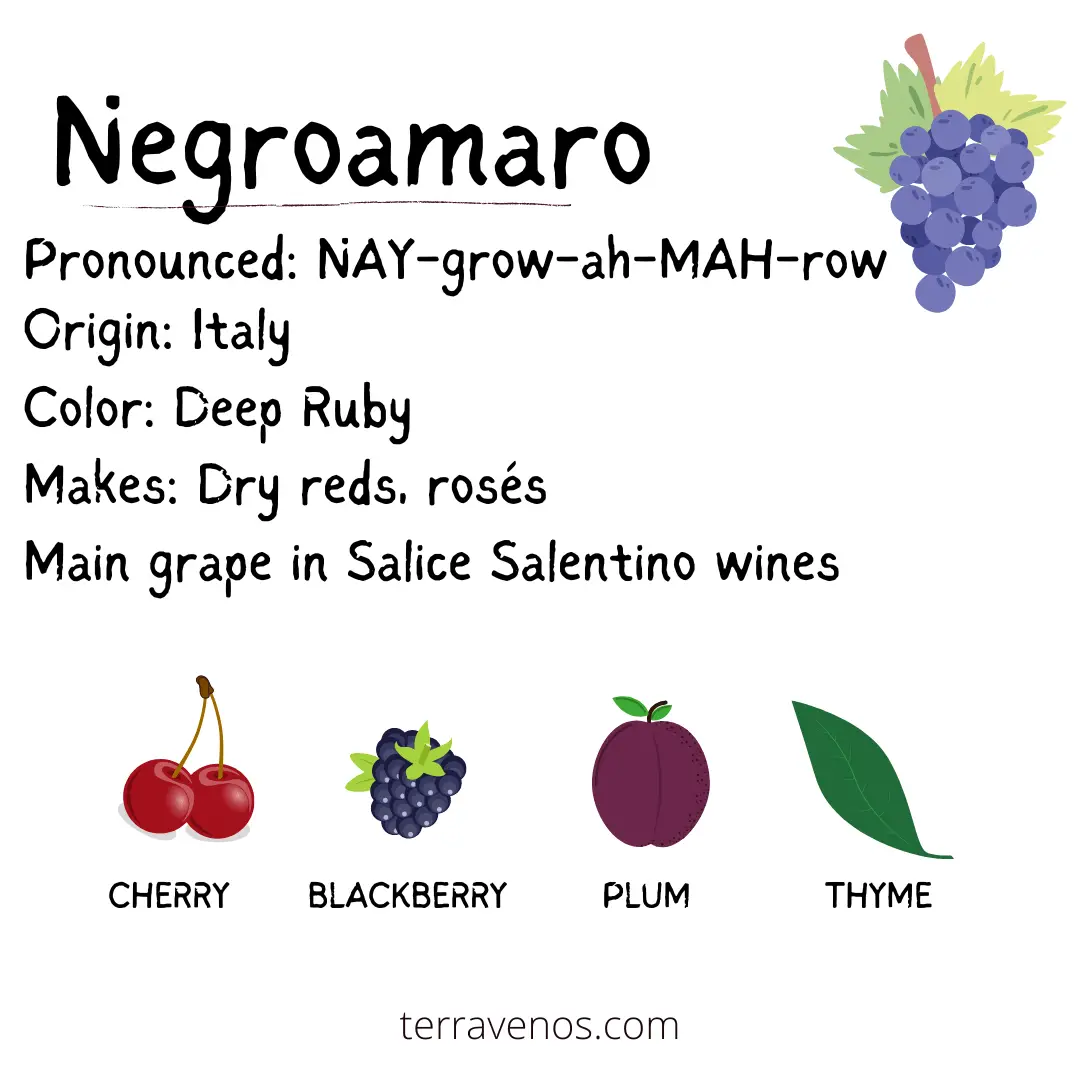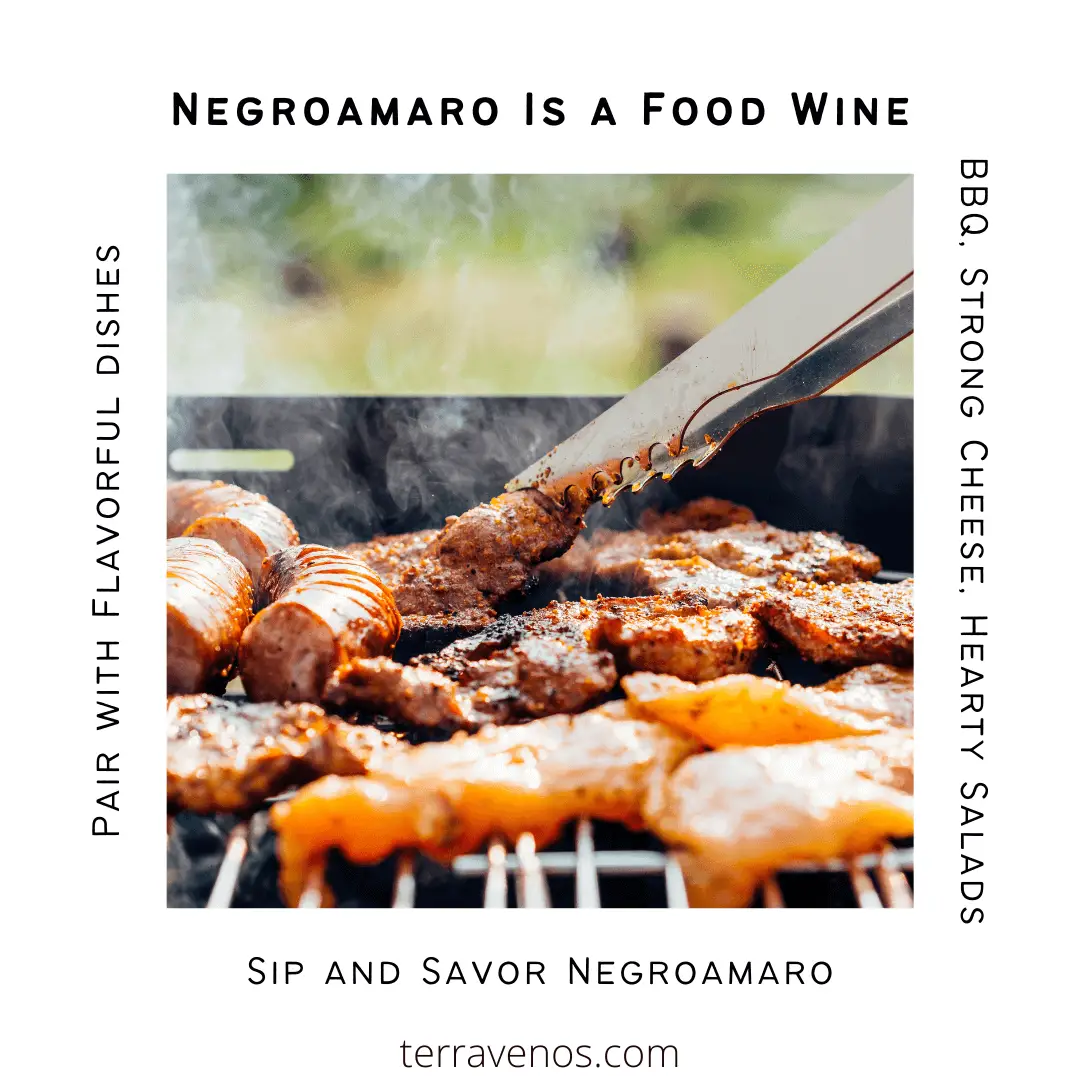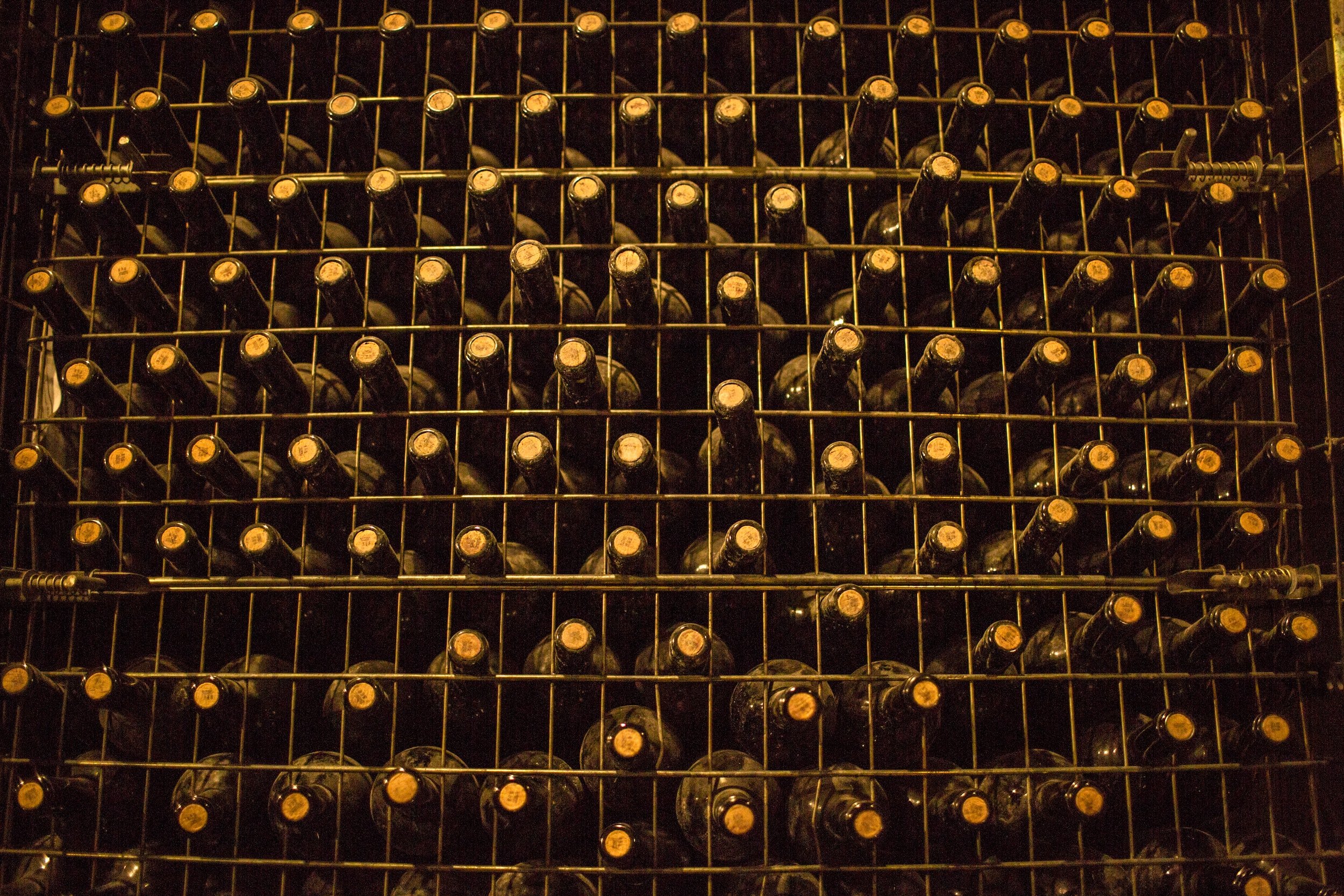
I was in the local bottle shop the other day talking to a man hanging out in the Italian wine section. He was looking for a one-off Italian red wine, and I suggested a Negroamaro-based Salice Salentino DOC wine. Never heard of Negroamaro or Salice Salentino before? You’re not alone!
The thick-skinned Italian black wine grape Negroamaro (pronounced NAY-grow-ah-MAW-row) is widely grown in the Southern Italian region of Puglia. Negroamaro makes dry red table wines that express a full-bodied, and rich tannin style with red and black fruit, warm spice, and a dried herb finish. Negroamaro’s similar to Napa Cabernet Sauvignon, Australian Shiraz, Argentinian Malbec, and Lodi Zinfandel. Enjoy Negroamaro with bold foods like sweet BBQ, garlicky pizza, sweet and sour teriyaki, and zesty pasta.
Here’s a rundown of Negroamaro wine basics.
- What Is Negroamaro?
- Where’s Negroamaro Originally From?
- Where Is Negroamaro Grown?
- Is Negroamaro Italian?
- Does Negroamaro Make Good Wines?
- What’s Negroamaro’s Taste Profile?
- What Grape Is Similar to Negroamaro?
- Is Negroamaro the Same as Primitvo?
- Negroamaro Wine Pairing Suggestions
- Is Negroamaro Good for Cooking?
- Is Negroamaro Cheap?
- Can You Age Negroamaro?
- How to Serve Negroamaro
- Thirsty for More?
What Is Negroamaro?

Negroamaro (negro means black and amaro means bitter), sometimes written as two words Negro Amaro, is a red Italian grape used to make deeply colored, perfumed and earthy wines.
Negroamaro can be used to make single varietal wines, but more often gets used as a blending partner with Sangiovese, Malvasia Nera, and Montepeluciano to add color, concentration, and body.
You may find Negroamaro used as a cheery rosé wine depending on where you live.
Lucky you!
Negroamaro rosé wine’s uncommon in the US import market.
Where’s Negroamaro Originally From?
There’s debate whether the ‘amaro’ part of Negroamaro’s name comes from the Italian word ‘bitter’ or the Greek word ‘black’ (mavro).
The former name of Negroamaro was “Niuru Maru” – Maru coming from the Greek word for Moor, or person from North Africa (referring to black skin color).
So maru or mavro may refer to Negroamaro’s deep black-violet skin color.
If it is indeed Greek, then the grape probably crossed onto the Italian mainland by Illyrian colonists before the Greeks arrived in the 7th century BC.
Where Is Negroamaro Grown?
Negroamaro comes from the Mediterranean coastline along the boot heel of Italia in Puglia, or Apulia, particularly from Brindisi, Lizzano, and Salice.
The grape thrives in the hot, sunny summers and temperate wet winters typical of the Mediterranean. The grape vines are vigorous, gifting winegrowers with high yields of thick-skinned black-violet grapes that ripen mid-season.
While Negroamaro’s often blended, you can find wines that require a majority of the grape.
Look for:
- Salice Salentino DOC – 85%-100% Negroamaro
- Alezio Riserva DOC – 85%-100% Negroamaro
- Lizzano DOC – 60%-80% Negroamaro
- Leverano Novello DOC – 50%-100% Negroamaro
- Puglia Negroamaro IGT – 85%-100% Negroamaro
- Tarantino Negroamaro IGT – 70% – 80% Negroamaro
Jargon Alert: DOC stands for Denominazione di Origine Controllata in Italy. DOC is the second highest quality level – with Denominazione di Origine Controllata meaning “designation of controlled origin”. IGT wines come from a specific geographical region. Check out this helpful post I wrote to learn more about the Italian DOC system.
Unfortunately, Negroamaro fell under the EU’s vine pull scheme and many vineyards were grubbed up; acreage fell from some 30,000 at their peak to 11,000 acres,
Salice Salentino DOC wines made from Negroamaro will probably be the wines you encounter on the export market.
Outside of Italy, you’ll find small plantings of Negroamaro in California.
Is Negroamaro Italian?
While the exact origins of Negroamaro aren’t known – maybe Italy, maybe Greece – Negroamaro’s definitely an ancient grape at home in the Mediterranean’s toasty summer sun.
Today, Negroamaro’s most closely associated with Southern Italy
Does Negroamaro Make Good Wines?

Traditionally, Negroamaro was destined as a blending grape to give color, body, and alcohol to other Italian wines (e.g., Sangiovese and Montepulciano), and didn’t make the best grapes. Today, Grapes from older vines that naturally restrict yields will result in deeply concentrated, higher quality, age-worthy wines.
Negroamaro loves the hot dry climate of Southern Italy and can produce high yields. Go for older-vine Negroamaro wines.
Tip: Check out this fun post on 7 fun Chianti Facts. Chianti’s mostly made from the thin skinned Sangiovese grape, so it’s not surprising producers sometimes use darker grapes to deepen their wine’s final color.
Advances in viticultural science mean that today Negroamaro can make full-bodied, complex wines attracting a growing fan base.
What’s Negroamaro’s Taste Profile?

Negroamaro is a dry Italian red wine. Your Negroamaro will taste similar to a new-world Bordeaux blend, bringing ripe red and black fruit, warm baking spice, and cherry, blackberry, and plum together.
Expect to find coffee, tobacco, black licorice, mocha, and an earthy note in your Negroamaro.
Negroamaro has medium to high tannins, but they’re softer than with a Cabernet Sauvignon. Expect medium to high acidity that delivers freshness to the fruit.
Tip: Knowing how to taste red wines can be helpful. Here’s a useful post I wrote to get started tasting red wine.
What Grape Is Similar to Negroamaro?
Negroamaro has the deep color and full body reminiscent of a Petite Sirah, Cabernet Sauvignon, Zinfandel, and Malbec.
The red and black fruit flavors of Negroamaro are similar to a warmer climate Cabernet Sauvignon, but the tannins will be softer than a Cab Sav and more like a Malbec.
If you’re turned off by strong tannins, but like a full bodied wine, then Negroamaro may be perfect for you. Expect Negroamaro to have more structure than a Zinfandel, with higher acid levels and firmer (but still soft) tannins.
If you love drinking rich Bordeaux blends from warmer growing regions, jammy Shiraz from Southeast Australia, California Cabernet Sauvignon, Zinfandel, or Malbec, then check out Negroamaro.
Is Negroamaro the Same as Primitvo?
While both Negroamaro and Primitivo grow in Italy’s boot region of Puglia, they are different grapes. Outside of Italy, you’ve probably heard of Primitivo by its more widely-used alias, Zinfandel.
Both Negroamaro and Primitivo share a deep ruby color, full body, and rich palate.
And it goes without saying that both wines are natural accompanists to Italy’s hearty country cuisine!
Negroamaro Wine Pairing Suggestions

At its core, Negroamaro’s a food wine and begs to be paired with bold dishes. The wine’s full body, firm tannins, and solid acid levels will stand up to hearty cuisine.
In general, full-bodied wines pair well with heavier foods, which could otherwise dominate a lighter wine. Whether you’re thinking about pairing Negroamaro, Cabernet Sauvignon, or Petit Syrah, these substantial wines will work with power plates.
Think about low-stress Negroamaro wine pairings as simple as BBQ wings or take-out pizza.
If you’re wondering what do you eat with Negroamaro wine, here are some ideas to whet your appetite:
- Pulled pork sandwiches
- Tacos or nachos
- Minestrone soup
- Ragu pasta and meatballs
- Pasta and pesto
- Pot pies
- Teriyaki bowls
- Grilled vegetables
- Glazed pork roast
- Pizza
- Ceasar salad
- Bratwurst and sauerkraut
Helpful Tip: If you’re just getting started out with wine, I put together this helpful overview of food with wine pairing to get you started. Side note – I spend just as much time thinking about food with wine pairing as I do deciding what I’m going to eat every night. Utter hedonism. What can I say?
Is Negroamaro Good for Cooking?

If you find yourself with a half-bottle of leftover Negroamaro wine or are thinking about substituting Negroamaro for a recipe that calls for red wine, then go for it!
I’ve personally used Negroamaro for pasta sauce.
Negroamaro’s tannin and fruit profile make it the perfect substitute for any recipe that calls for red wine, be it soups, sauces, or sautees.
Is Negroamaro Cheap?
Italian wines score high on affordability for quality, and Negroamaro is no different. Expect to pay between $10USD – $20 USD for an imported Negroamaro wine from Puglia, which is worth every penny.
You’ll find delicious Negroamaro bottles for under $18 USD (as of 2022), and often around the $13 USD per bottle. You can find expensive bottlings of Negroamaro, for example, with premium bottlings from the producer Leone de Castris Salice Salentino, which can cost upwards of $200/USD per bottle.
Helpful Wine Buying Tip: Wines come in a variety of price points and quality levels. Ever wonder why your wine costs what it does? Check out this useful post I wrote to understand how wine bottle price works.
Can You Age Negroamaro?

Everyday bottles of Negroamaro wines that cost under $20 USD will lack the intense concentration and structure that could allow them to age for decades.
If you purchase a regular bottle of Negroamaro wine, plan on drinking it within 2-3 years of the vintage date.
If you find a higher-quality bottling with oak aging, then you may be able to cellar Negroamaro for up to 5 years.
Of course, super-premium bottles of Negroamaro can last for upwards of 15 years, but those are most likely cellar-worthy investment bottles that you’re looking at procuring from a specialty wine shop.
Generally speaking, I tend to choose the youngest bottles (most recent vintage) when I find Negroamaro wines in my local bottle shop.
How to Serve Negroamaro
Serve your Negroamaro wine at room temperature. The ideal temperature to serve Negro Amaro is between 5-20°C (60–68°F). Use an oversized wine glass to help lift the aromatics up and get the full effect of this bold Italian red wine.
Thirsty for More?
If you love Italian reds, go check out Barbera wines, a bright, fruity red from northern Italy.
And here’s a post on what you need to know about Nebbiolo, a red grape that makes some of Italy’s most ageable wines, Barolo.
If you’re just getting into wine, head over to this post on the world’s most famous wine regions and their signature wine styles.



